maurice hurst jr.
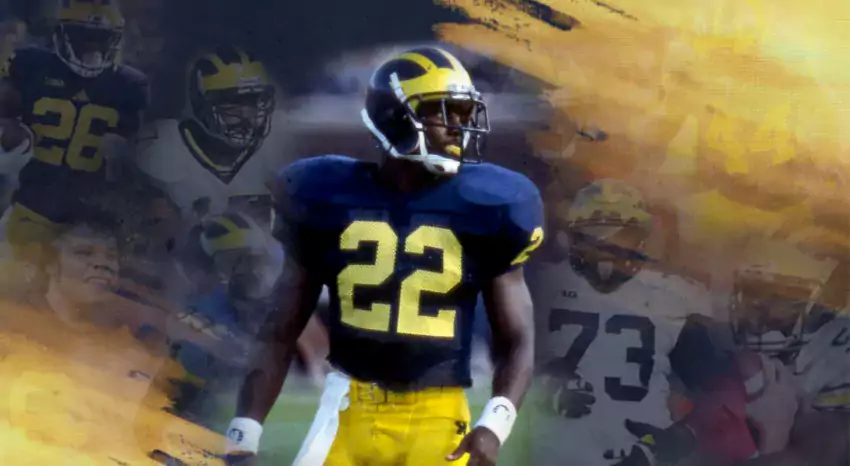
I started a bit of offseason content during the long offseason so I might as well finish it. I'll post the 3-, 4-, and 5-star teams next to each other at the end and link a poll if you want to compare.
What is this? I'm making a team of Michigan four-stars since 1990. Offense is here. For the writeups I gave up on focusing on the recruiting rankings because compared to 3-stars (there's always a reason) and 5-stars (there's always a story), 4-star recruitments are boring. Instead I'll try to tell you something about the guy you didn't know.
More All-Michigan [Blank] Teams: 5-Stars, 3-Stars, Pro Offense/Pro Defense, 1879-Before Bo, Extracurriculars, Position-Switchers, Highlights, Numbers Offense/Numbers Defense, In-State, Names, Small Guys, Big Guys, Freshmen
Rules: Lower bound: must be a four-star to at least one major ranker of his era, and average over 4.0 stars on the Seth scale. Upper bound: cannot a 5-star to anybody or average higher than a 4.50 on the Seth scale. Since 1990 because data go back that far. College performance considered only.
Defensive Tackle
Left: photo via Maize and Blue Nation. Right: Bryan Fuller
Mo Hurst (2013) burst into the consciousness of recruiters with a play he made while on offense, as the nation delighted in the fullback shrugging off eleven overmatched Northeastern schoolchildren for a 70-yard touchdown run.
The rest of the tape was the dude teleporting into the backfield. His coach used "yay" as an adjective.
The recruiting comp for Hurst was Mike Martin (2008), whom Brian described as "pulsing" and "a single twitching muscle." A wrestler and "crab person" for his perfect pad level, the Detroit Catholic Central committed to Lloyd Carr in June and stuck when the staff switched. In the interim he blew up, with his film showing a slab of muscle running down ballcarriers like a linebacker. Because Michigan had just experienced The Horror while this was happening, every recruiter checked in with Martin to ask if he's sure he wanted to "be on a sinking ship."
All of that negative recruiting might have helped Michigan keep Martin in the fold when Notre Dame made their serious run at him in November; according to Mike he was swayable right up until his Notre Dame recruiter started his visit by badmouthing Michigan. If everyone else started their pitch with why he shouldn't choose Michigan, that probably meant they knew Michigan had the most to offer. I have his contact so I might reach out about bringing back this shirt:
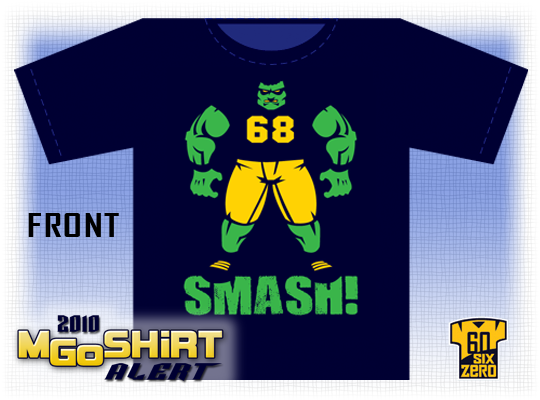
[After THE JUMP: Even I can't make Dan Rumishek interesting, but I can certainly make you appreciate uninteresting]
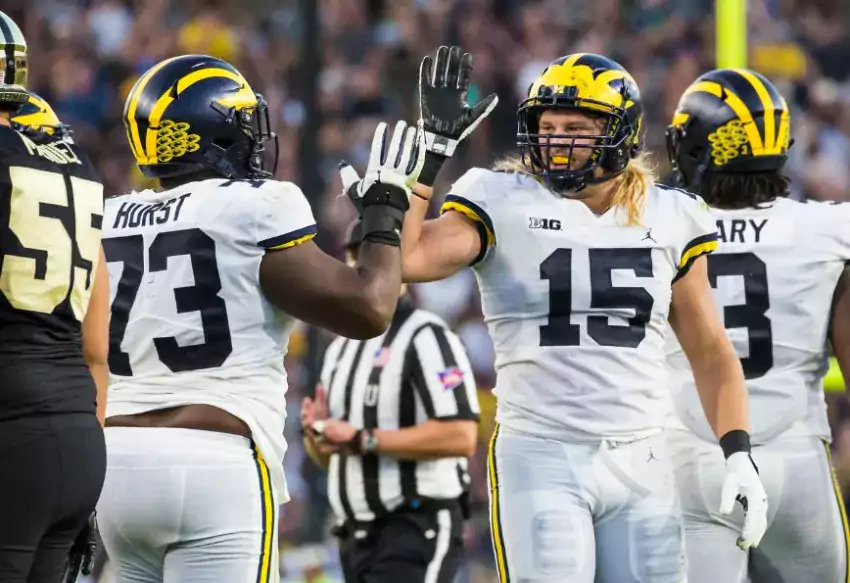
A series covering Michigan's 2010s. Previously: QBs, RBs, and WRs, TEs, FBs, and OL, best blocks, the aughts.
Methodology: The staff decided these together and split the writeups. Considering individual years but a player can only be nominated once.
DEFENSIVE TACKLE: Maurice Hurst Jr. (2017)
The spread age means defensive material gets moved away from the box, simplifying the game by taking away most of the defense's opportunity to surprise. You can't bring pressure from everywhere if your OLBs and safeties have to split out with slot receivers. RPOs, quick passing games, receiver running backs, cross-motion, run-threat QBs, and read-based rushing offenses nerf the effectiveness of even the elite edge rushers until passing downs take those options away. But the one thing spread offenses have no answer for is a penetrating defensive tackle who won't get doubled and won't get out of his damn lane.
Into this math stepped Mo Hurst, and oh was that first step unholy quick.
The spread has no answer for that.
Hurst was the son of an NFL father who'd left only his name, from a fancy Massachusetts private school his mom had to Mom Out to pay for, and a first step looking to be attached to a football player.
Why Mike Martin? Two words: snap explosion.
Martin was a bit higher rated—consensus four star outside the top 100, IIRC—and an ever-growing slab of pulsating muscle from day one. Hurst isn't going to be quite as ripped, but he is a kid who can get off the ball in a flash, bury himself in the chest of the opponent, and then rip through the dude before he knows what's going on.
We were hype, with distant future caveats. The burst came in 2015, first as a passing down sub for Ryan Glasgow, then a cycler with the aforementioned and Willie Henry. Hurst made his mark on the season with quick flashes into the backfield, but got exposed for his youth when Glasgow was out and Kevin Wilson's fast-paced Indiana stretched him to death.
By 2016 the MGoBlog love for the wrecking ball responsible for Michigan's second line (Gary/Hurst/Mone/Winovich) matching the starters (Wormley/Godin/Glasgow/Taco) in production was expressed in UFR (+84.5/-20) then surpassed by Pro Football Focus—then at the fulness of their scouting, and it was on. We called him the defensive MVP (over Peppers). They put him on the All-American team. We wrote a profile in and put him rubbing his belly on the cover of HTTV, they put him on the top of the top players returning for 2017. We created a maurice hurst is so good he is kind of boring tag. They put him in Heisman territory:
Congratulations to the 2017 PFF All-American 1st Team Defense pic.twitter.com/77eGJzxz1p
— PFF Draft (@PFF_College) December 6, 2017
This site wasn't far off—Hurst's senior season tape is the best by a DT or any other position in the history of the exercise. His +152/-27.5 is the standing record for UFR. The 3-3-5 they routinely deployed, because there wasn't a second line of Mo Hursts anymore, nerfed his statistical impact. This site was saying this after Game 2:
He is Mo Hurst. The end.
How far you want to go with the superlatives after that is up to you. The best player of the 2010s? There's an argument. The best DT in Michigan history? Depends how much film you want to watch. But if you want to know what's different about Michigan's last two defensive efforts against Ohio State and the two that gave wobby offenses a chance to win in 2016 and 2017, he is Mo Hurst. The end.
--Seth
[After THE JUMP: MGoBlog and the mid-teens were good for one thing]
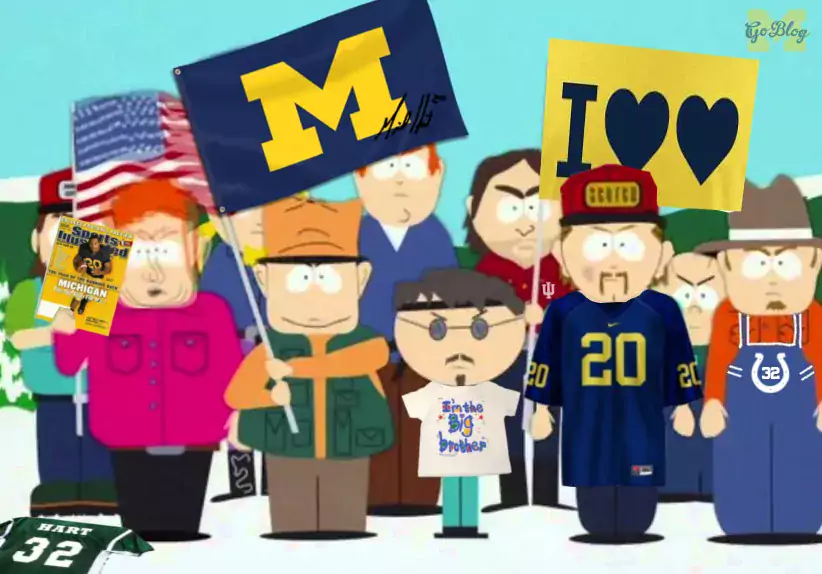
Last offseason I was making these Michigan All-____ Teams and I didn't get around to all of the ideas. So let's.
Previously:
- Ancient History: 1879 to 1968
- The 5-stars
- The 3-stars
- The Extracurriculars
- Position-Switchers
- Highlights
- All-Numbers Team Part I: The Offense
- All-Numbers Team Part II: The Defense
- The Best of Michigan (the state)
- All-Name Team
Today's Rules: You must be in the bottom quartile of height for your position and get extra points for being shorter than that. Weight doesn't matter as much as height (because most of these guys had to add a lot of it). Also this has to be relative to the players of your era—with a heavy recency bias—because there was a time when a six-foot offensive tackle was considered huge. For example, here's 5'11" Anthony Carter with some of the other 1979 offensive starters (via a Dr. Sap article on MVictors):
I'm going to use my discretion as we go, but if a player wasn't remarkably tiny for his era, even if he would be in ours, he doesn't count.
The problem: Rosters lie, especially regarding these players, because listing a short guy at his real height could depress his pro future. Where I have knowledge of a guy's actual height I'll use that, and beyond that I'm just going to do my best.
Quarterback: Denard Robinson
Last listed size: 6'0"/197 (2012)
[Brian Fuller]
Strangely, 2019 recruit Cade McNamara, at 6'1", is the third-shortest Michigan scholarship quarterback since Bo, with Denard and 2008 proto-Denard Justin Feagin both listed at a straight six. Or maybe that's not so strange because height in a quarterback is so highly valued. In my opinion it's highly overrated; the last two Heisman winners were Oklahoma quarterbacks listed at 6'0" and 5'11", QED. Notably, despite Michigan's clear preference for tall guys, some of their best were all on the shorter side, including Chad Henne and Shea Patterson, both just 6'2". Anyway, the rosters lied about Denard's height, which was probably 5'11" or just under it. I should mention the 2011 roster lists Denard as 5'9", which is wrong but feels right. His height led to a few batted balls, but since his center also appears later on this list (and Ricky Barnum wasn't very tall either), and because defenders in space had to approach warily lest Denard escape the pocket, the % of batted balls from Denard in the UFRs is lower than that for Henne.
Honorable Mention: Dennis Brown (5'10"/175), Tate Forcier (6'1"/190), Harry Newman (5'7"/174), Boss Weeks (5'7"/161) lots of other old dudes. Michigan's first great quarterback (and college athletics' first great athletic director) Charles Baird was listed at 5'6". Michigan's shortest QB on the Bentley database was 1914-'16 bencher Harold Zeiger, at 5'4".
[After THE JUMP: Not who you think]
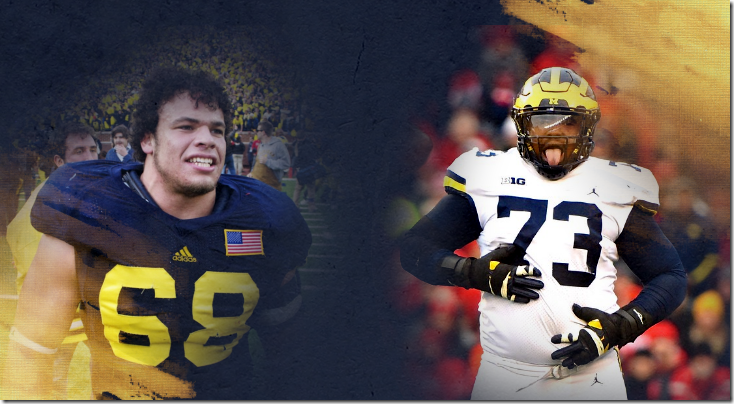
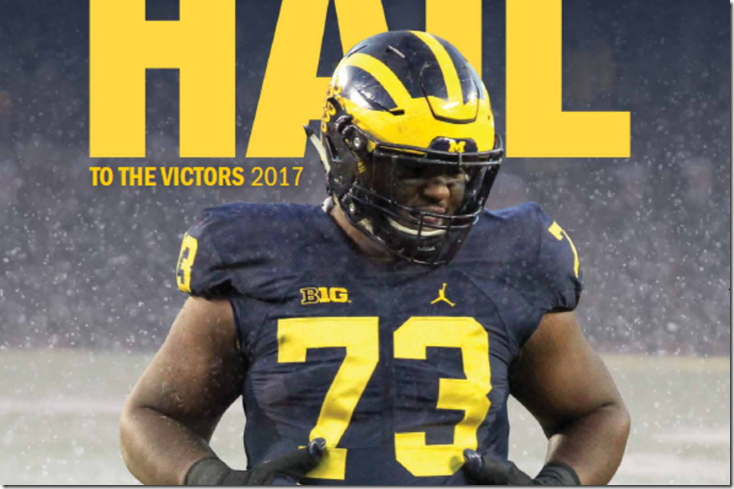
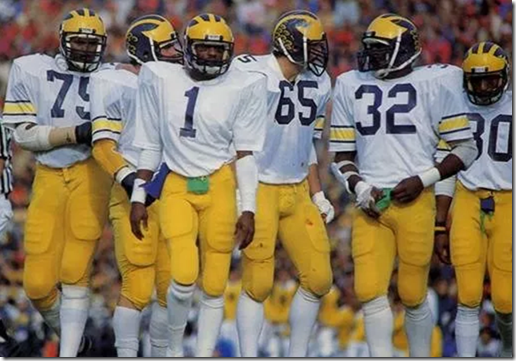
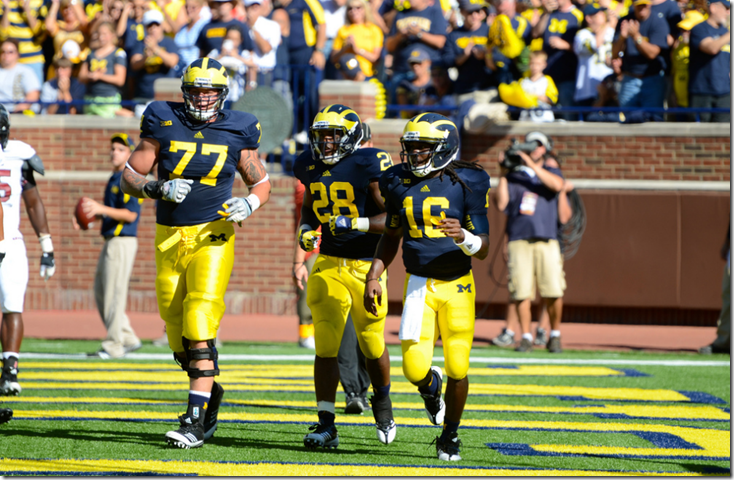
32